Docosanoic acid
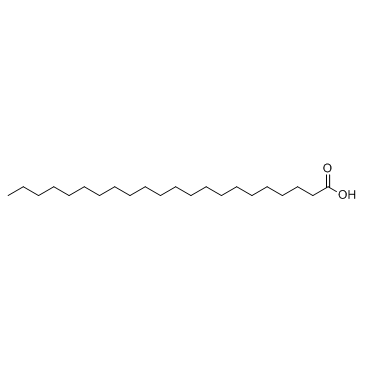
Docosanoic acid structure
|
Common Name | Docosanoic acid | ||
|---|---|---|---|---|
| CAS Number | 112-85-6 | Molecular Weight | 340.584 | |
| Density | 0.9±0.1 g/cm3 | Boiling Point | 391.8±5.0 °C at 760 mmHg | |
| Molecular Formula | C22H44O2 | Melting Point | 72-80 °C(lit.) | |
| MSDS | Chinese USA | Flash Point | 176.3±12.5 °C | |
Use of Docosanoic acidDocosanoic acid is poorly absorbed, and a cholesterol-raising saturated fatty acid in humans. |
| Name | behenic acid |
|---|---|
| Synonym | More Synonyms |
| Description | Docosanoic acid is poorly absorbed, and a cholesterol-raising saturated fatty acid in humans. |
|---|---|
| Related Catalog | |
| Target |
Human Endogenous Metabolite |
| References |
| Density | 0.9±0.1 g/cm3 |
|---|---|
| Boiling Point | 391.8±5.0 °C at 760 mmHg |
| Melting Point | 72-80 °C(lit.) |
| Molecular Formula | C22H44O2 |
| Molecular Weight | 340.584 |
| Flash Point | 176.3±12.5 °C |
| Exact Mass | 340.334137 |
| PSA | 37.30000 |
| LogP | 10.34 |
| Vapour Pressure | 0.0±0.9 mmHg at 25°C |
| Index of Refraction | 1.459 |
| Storage condition | 2-8°C |
| Stability | Stable. Combustible. Incompatible with bases, oxidizing agents, reducing agents. |
Synonym:Behenic Acid Section 2 - COMPOSITION, INFORMATION ON INGREDIENTS
Risk Phrases: None Listed. Section 3 - HAZARDS IDENTIFICATION EMERGENCY OVERVIEW
The toxicological properties of this material have not been fully investigated. Potential Health Effects Eye: May cause eye irritation. Skin: May cause skin irritation. Ingestion: May cause irritation of the digestive tract. The toxicological properties of this substance have not been fully investigated. Inhalation: May cause respiratory tract irritation. The toxicological properties of this substance have not been fully investigated. Chronic: No information found. Section 4 - FIRST AID MEASURES Eyes: Flush eyes with plenty of water for at least 15 minutes, occasionally lifting the upper and lower eyelids. Get medical aid. Skin: Get medical aid. Flush skin with plenty of water for at least 15 minutes while removing contaminated clothing and shoes. Wash clothing before reuse. Ingestion: Never give anything by mouth to an unconscious person. Get medical aid. Do NOT induce vomiting. If conscious and alert, rinse mouth and drink 2-4 cupfuls of milk or water. Inhalation: Remove from exposure and move to fresh air immediately. If not breathing, give artificial respiration. If breathing is difficult, give oxygen. Get medical aid. Notes to Physician: Section 5 - FIRE FIGHTING MEASURES General Information: As in any fire, wear a self-contained breathing apparatus in pressure-demand, MSHA/NIOSH (approved or equivalent), and full protective gear. During a fire, irritating and highly toxic gases may be generated by thermal decomposition or combustion. Extinguishing Media: Use agent most appropriate to extinguish fire. Use water spray, dry chemical, carbon dioxide, or appropriate foam. Section 6 - ACCIDENTAL RELEASE MEASURES General Information: Use proper personal protective equipment as indicated in Section 8. Spills/Leaks: Clean up spills immediately, observing precautions in the Protective Equipment section. Sweep up, then place into a suitable container for disposal. Avoid generating dusty conditions. Provide ventilation. Section 7 - HANDLING and STORAGE Handling: Wash thoroughly after handling. Remove contaminated clothing and wash before reuse. Use with adequate ventilation. Minimize dust generation and accumulation. Avoid contact with eyes, skin, and clothing. Keep container tightly closed. Avoid ingestion and inhalation. Storage: Store in a tightly closed container. Store in a cool, dry, well-ventilated area away from incompatible substances. Section 8 - EXPOSURE CONTROLS, PERSONAL PROTECTION Engineering Controls: Facilities storing or utilizing this material should be equipped with an eyewash facility and a safety shower. Use adequate ventilation to keep airborne concentrations low. Exposure Limits CAS# 112-85-6: Personal Protective Equipment Eyes: Wear appropriate protective eyeglasses or chemical safety goggles as described by OSHA's eye and face protection regulations in 29 CFR 1910.133 or European Standard EN166. Skin: Wear appropriate protective gloves to prevent skin exposure. Clothing: Wear appropriate protective clothing to prevent skin exposure. Respirators: A respiratory protection program that meets OSHA's 29 CFR 1910.134 and ANSI Z88.2 requirements or European Standard EN 149 must be followed whenever workplace conditions warrant respirator use. Section 9 - PHYSICAL AND CHEMICAL PROPERTIES Physical State: Powder Color: white Odor: None reported. pH: Not available. Vapor Pressure: Not available. Viscosity: Not available. Boiling Point: 306 deg C @ 60.00mmHg Freezing/Melting Point: 80.00 - 82.00 deg C Autoignition Temperature: Not applicable. Flash Point: Not applicable. Explosion Limits, lower: Not available. Explosion Limits, upper: Not available. Decomposition Temperature: Solubility in water: Specific Gravity/Density: Molecular Formula: C22H44O2 Molecular Weight: 340.58 Section 10 - STABILITY AND REACTIVITY Chemical Stability: Stable under normal temperatures and pressures. Conditions to Avoid: Incompatible materials, dust generation, excess heat, strong oxidants. Incompatibilities with Other Materials: Oxidizing agents. Hazardous Decomposition Products: Carbon monoxide, irritating and toxic fumes and gases, carbon dioxide. Hazardous Polymerization: Has not been reported. Section 11 - TOXICOLOGICAL INFORMATION RTECS#: CAS# 112-85-6 unlisted. LD50/LC50: Not available. Carcinogenicity: Docosanoic Acid - Not listed by ACGIH, IARC, or NTP. Section 12 - ECOLOGICAL INFORMATION Section 13 - DISPOSAL CONSIDERATIONS Dispose of in a manner consistent with federal, state, and local regulations. Section 14 - TRANSPORT INFORMATION IATA No information available. IMO No information available. RID/ADR No information available. Section 15 - REGULATORY INFORMATION European/International Regulations European Labeling in Accordance with EC Directives Hazard Symbols: Not available. Risk Phrases: Safety Phrases: S 24/25 Avoid contact with skin and eyes. S 28A After contact with skin, wash immediately with plenty of water. S 37 Wear suitable gloves. S 45 In case of accident or if you feel unwell, seek medical advice immediately (show the label where possible). WGK (Water Danger/Protection) CAS# 112-85-6: 0 Canada CAS# 112-85-6 is listed on Canada's DSL List. CAS# 112-85-6 is not listed on Canada's Ingredient Disclosure List. US FEDERAL TSCA CAS# 112-85-6 is listed on the TSCA inventory. SECTION 16 - ADDITIONAL INFORMATION N/A |
| Personal Protective Equipment | Eyeshields;Gloves;type N95 (US);type P1 (EN143) respirator filter |
|---|---|
| Hazard Codes | Xi |
| Risk Phrases | R36/37/38 |
| Safety Phrases | S26-S36/37/39-S24/25 |
| RIDADR | NONH for all modes of transport |
| WGK Germany | - |
| Packaging Group | II |
| Hazard Class | 6.1 |
| HS Code | 2915900090 |
| Precursor 8 | |
|---|---|
| DownStream 9 | |
| HS Code | 2915900090 |
|---|---|
| Summary | 2915900090 other saturated acyclic monocarboxylic acids and their anhydrides, halides, peroxides and peroxyacids; their halogenated, sulphonated, nitrated or nitrosated derivatives VAT:17.0% Tax rebate rate:9.0% Supervision conditions:AB(certificate of inspection for goods inward,certificate of inspection for goods outward) MFN tariff:5.5% General tariff:30.0% |
|
HMDB: a knowledgebase for the human metabolome.
Nucleic Acids Res. 37(Database issue) , D603-10, (2009) The Human Metabolome Database (HMDB, http://www.hmdb.ca) is a richly annotated resource that is designed to address the broad needs of biochemists, clinical chemists, physicians, medical geneticists, ... |
|
|
The human serum metabolome.
PLoS ONE 6(2) , e16957, (2011) Continuing improvements in analytical technology along with an increased interest in performing comprehensive, quantitative metabolic profiling, is leading to increased interest pressures within the m... |
|
|
Cuticular wax biosynthesis is up-regulated by the MYB94 transcription factor in Arabidopsis.
Plant Cell Physiol. 56(1) , 48-60, (2015) The aerial parts of all land plants are covered with hydrophobic cuticular wax layers that act as the first barrier against the environment. The MYB94 transcription factor gene is expressed in abundan... |
| Docosanoic acid |
| docosanic acid |
| n-docosanoic acid |
| MFCD00002807 |
| Hydrofol 2022-55 |
| behenic acid |
| Glycon B-70 |
| Hydrofol Acid 560 |
| EINECS 204-010-8 |
| Docosoic acid |
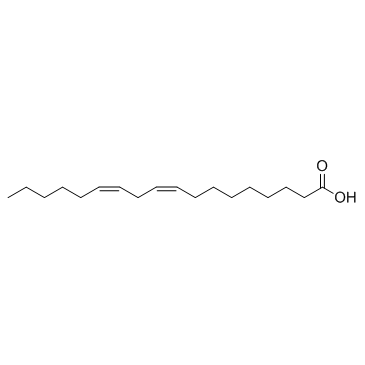 CAS#:60-33-3
CAS#:60-33-3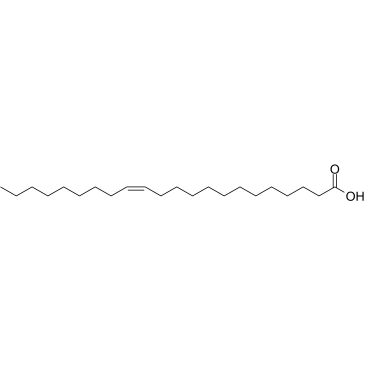 CAS#:112-86-7
CAS#:112-86-7 CAS#:629-80-1
CAS#:629-80-1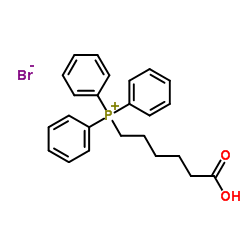 CAS#:50889-29-7
CAS#:50889-29-7 CAS#:86227-47-6
CAS#:86227-47-6 CAS#:638-68-6
CAS#:638-68-6 CAS#:111-20-6
CAS#:111-20-6 CAS#:818-88-2
CAS#:818-88-2 CAS#:55726-23-3
CAS#:55726-23-3 CAS#:929-77-1
CAS#:929-77-1 CAS#:110-94-1
CAS#:110-94-1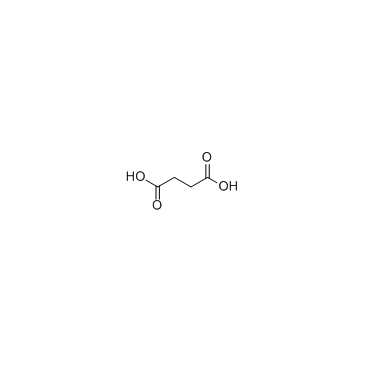 CAS#:110-15-6
CAS#:110-15-6 CAS#:64-19-7
CAS#:64-19-7 CAS#:26720-37-6
CAS#:26720-37-6 CAS#:26719-01-7
CAS#:26719-01-7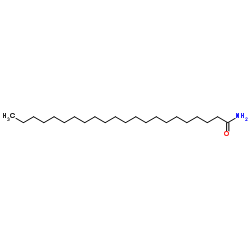 CAS#:3061-75-4
CAS#:3061-75-4 CAS#:629-94-7
CAS#:629-94-7
